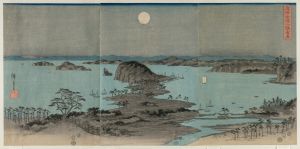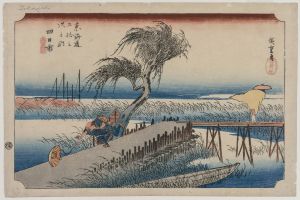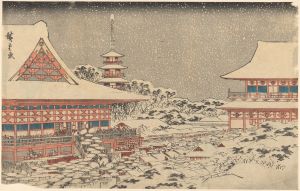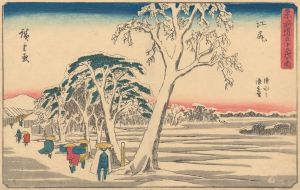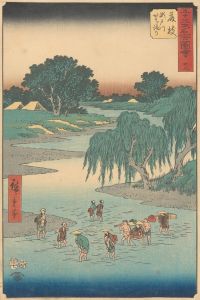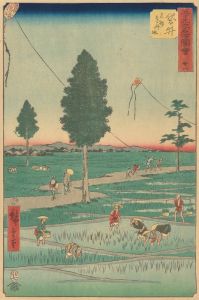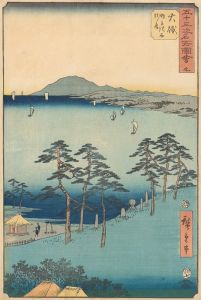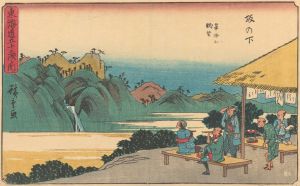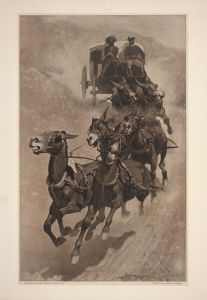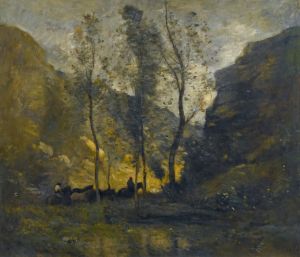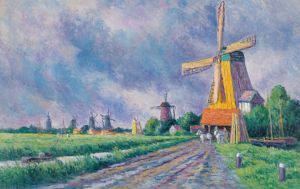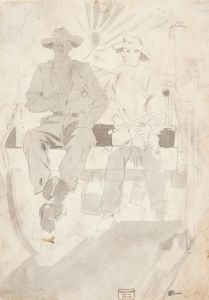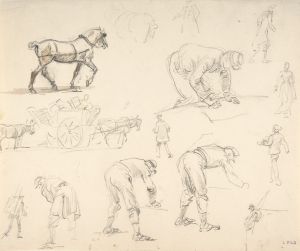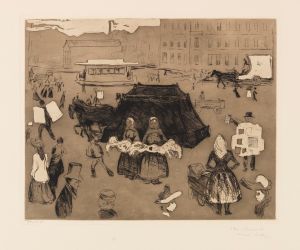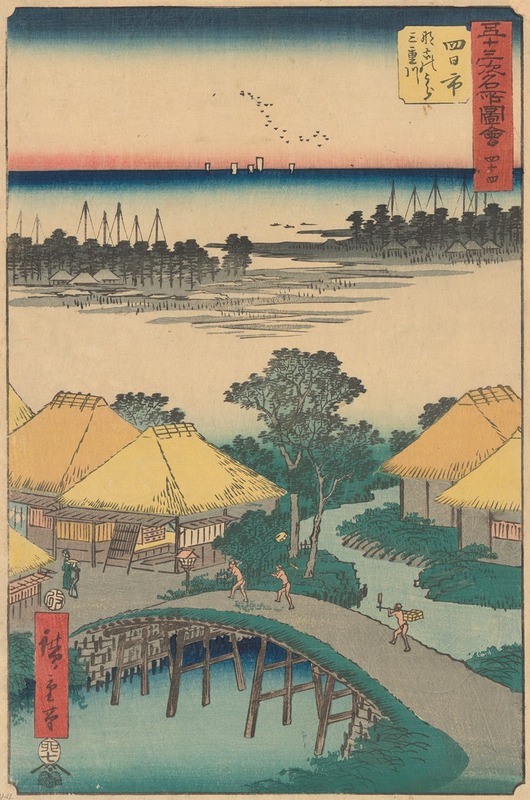
Yokkaichi
A hand-painted replica of Andō Hiroshige’s masterpiece Yokkaichi, meticulously crafted by professional artists to capture the true essence of the original. Each piece is created with museum-quality canvas and rare mineral pigments, carefully painted by experienced artists with delicate brushstrokes and rich, layered colors to perfectly recreate the texture of the original artwork. Unlike machine-printed reproductions, this hand-painted version brings the painting to life, infused with the artist’s emotions and skill in every stroke. Whether for personal collection or home decoration, it instantly elevates the artistic atmosphere of any space.
Andō Hiroshige, a renowned Japanese ukiyo-e artist of the Edo period, is celebrated for his landscape prints and depictions of the natural world. One of his notable works is "Yokkaichi," which is part of his famous series "The Fifty-three Stations of the Tōkaidō." This series, created in the 1830s, captures the scenic beauty and cultural significance of the Tōkaidō road, a vital route connecting Edo (modern-day Tokyo) to Kyoto. The series consists of 55 woodblock prints, each representing a station along the Tōkaidō, and it played a significant role in popularizing landscape art in Japan.
"Yokkaichi" is the 44th station in the series and is known for its dynamic composition and atmospheric effects. The print depicts a windy day in the post town of Yokkaichi, which was an important stop for travelers during the Edo period. Hiroshige's portrayal of Yokkaichi captures the essence of the town's bustling activity and the challenges faced by travelers due to the weather conditions.
In the foreground of the print, a strong gust of wind is shown sweeping through the town, causing a man to chase after his hat, which has been blown off his head. This element of movement and the struggle against nature is a common theme in Hiroshige's work, illustrating the transient and unpredictable nature of life. The wind also affects the trees and the clothing of the figures, adding a sense of immediacy and realism to the scene.
The background features a view of the sea, with boats navigating the choppy waters, further emphasizing the impact of the wind. Hiroshige's use of perspective and his ability to convey depth through the arrangement of elements in the composition are evident in this print. The artist's skillful use of color and shading enhances the atmospheric quality of the scene, with muted tones suggesting the overcast sky and the subdued light of the day.
Hiroshige's "Yokkaichi" is not only a representation of a specific location but also an exploration of the interaction between humans and their environment. The print reflects the daily life and experiences of people during the Edo period, offering insight into the historical and cultural context of the time. As with many of Hiroshige's works, "Yokkaichi" combines artistic beauty with documentary value, providing a window into the past.
The "Fifty-three Stations of the Tōkaidō" series, including "Yokkaichi," was highly popular during Hiroshige's lifetime and continues to be celebrated for its artistic and historical significance. The series influenced both Japanese and Western artists, contributing to the development of landscape art and the appreciation of Japanese aesthetics worldwide. Hiroshige's ability to capture the essence of a moment and his innovative approach to composition and color have cemented his legacy as one of Japan's greatest ukiyo-e masters.





